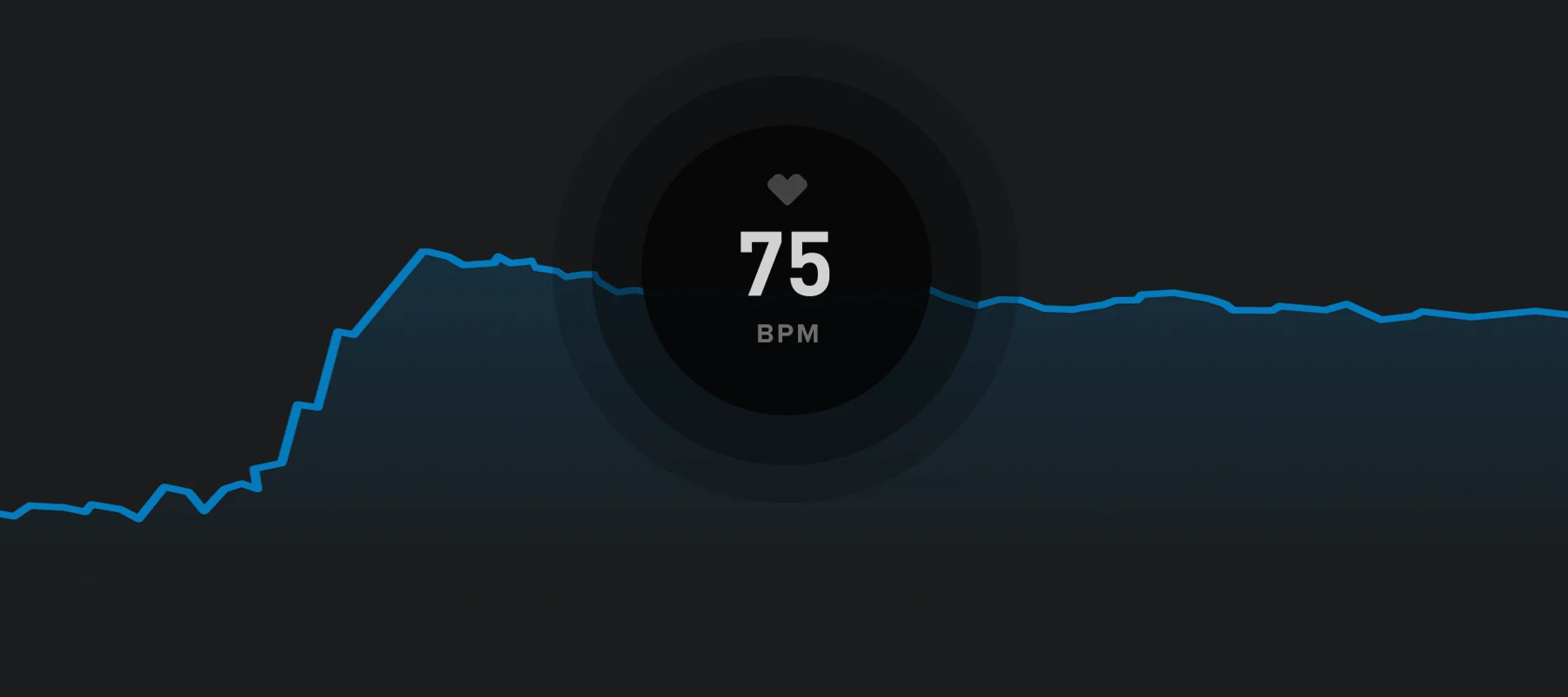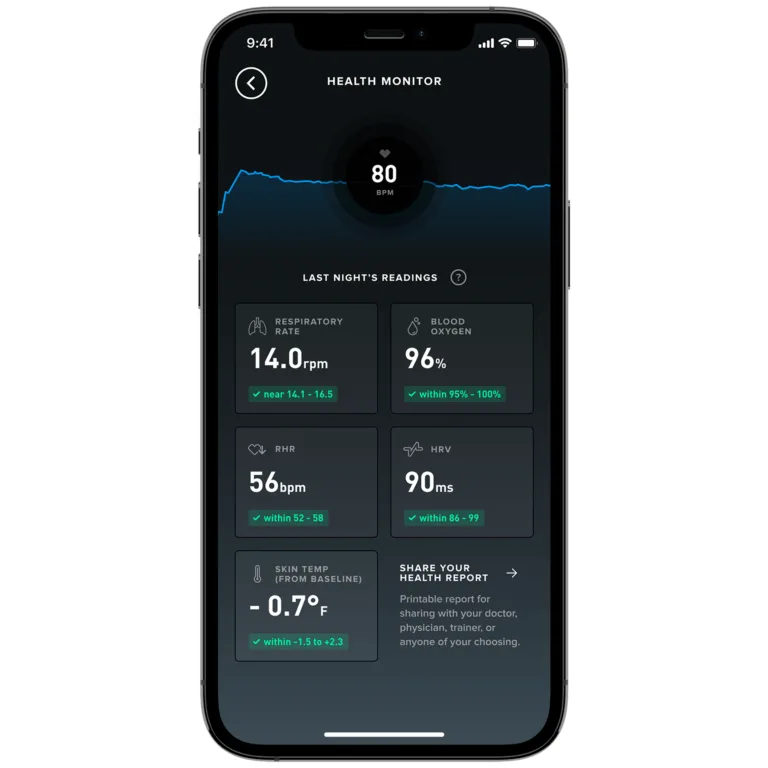Topics
- Article
- Health & Wellness
5 Vital Signs and How to Track Them

Your normal vital signs provide data about your overall health. Tracking them over time can help you establish personal baselines for your heart rate, respiratory rate, temperature, blood pressure and pulse oximetry.
Vital signs are a group of metrics that indicate how your heart, lungs, and other bodily functions are working. There are four primary vital signs that medical professionals monitor. These are heart rate, respiratory rate, blood pressure, and body temperature. Blood oxygen is often included as a fifth vital sign. Taken together these signs can help medical professionals assess your overall wellness, diagnose illness, and show recovery progress.
Why You Should Track Your Vital Signs
During your regular visits to the doctor, a medical professional takes your pulse rate, blood oxygen, respiratory rate, blood pressure and temperature to indicate your overall health. If you’re hospitalized your vital signs are consistently monitored to measure progress during your care. Establishing your vital signs baseline may help you understand and note sudden changes or gradual improvements in your overall health.
Heart Rate
Also called pulse rate, heart rate is the number of times the heart beats per minute. Pulse is the rate at which the heart beats while pumping blood through the arteries. Medical professionals use pulse to check for abnormal rhythm and strength. You can take your pulse at your wrist, neck, elbow, behind the knee, or the top of the foot. Medical professionals use a stethoscope to measure heart rate on the chest. A normal resting heart rate ranges between 60 and 100 beats per minute (bpm) for adults. Factors that affect heart rate: Pulse can vary based on age, fitness level, recent exercise, disease, emotion, body size, and medication.
Respiratory Rate
Respiratory rate is the number of breaths you take per minute, usually measured while at rest. Measuring respiration is as simple as counting the number of breaths or how many times the chest rises in one minute. Respiratory rate can be an indicator of illness. Temporary breathing changes occur with stuffy noses or exercise, but very slow or labored breathing can be a sign of illness or other breathing problems. Normal respiratory rate for adults is between 12 and 20 breaths or respirations per minute (RPM). Factors that affect respiratory rate: Conditions that can change respiratory rate include asthma, anxiety, medication use, and illnesses such as pneumonia and COVID-19.
Temperature
Medical professionals use temperature as a clue to infection, inflammation, and fever. Women can use temperature to monitor their menstrual cycles. Checking your temperature around the same time each day can provide you a consistent baseline because your body temperature is generally lower in the early morning and highest in the late afternoon. It’s also warmer after exercise. The average body temperature is 98.6 degrees Fahrenheit or 37 degrees Celsius. But, normal temperature can range from 97.8 to 99.1 for a healthy person. A fever is a body temperature higher than an individual person’s average, while one lower than 95 degrees is called hypothermia. Factors that affect temperature include stress, depression, exercise, dehydration, the environment, hot or cold beverages, and thyroid disorders.
Blood Pressure
Blood pressure is measured as the heart contracts to push blood through the arteries. It includes two measurements: Systolic pressure and diastolic pressure. Systolic pressure is measured after the heart contracts and is the higher number. Diastolic pressure is measured before the heart contracts and is the lower number. Medical professionals use an arm cuff to measure blood pressure. Blood pressure and heart rate are two different vital signs. When the heart beats faster healthy blood vessels dilate, allowing more blood to flow more easily. Normal blood pressure for most adults is generally a systolic pressure of less than 120, and a diastolic pressure less than 80. Factors that affect blood pressure: Diet, stress and anxiety, alcohol and tobacco use, chronic conditions, family history, medications, and even time of day can affect blood pressure.
Fifth Vital Sign: Pulse Oximetry
Blood oxygen is considered the unofficial fifth vital sign. Pulse oximetry measures the level of oxygen in the blood. Your blood oxygen level shows how much oxygen is being carried by your red blood cells through your circulatory system. There are two ways to measure blood oxygen levels. One is an arterial blood gas test, which requires blood to be drawn from an artery. The other is pulse oximetry, which involves shining two wavelengths of light through the skin where it is absorbed and reflected. The absorption rate changes based on the amount of oxygen in the red blood cells. Normal blood oxygen level is between 95% and 100%. Factors that affect blood oxygen levels: Low oxygen levels can be related to disease, environment such as high altitude, anemia, smoking, and sleep apnea.
Normal Vital Signs for the Average Adult
Normal vital signs vary depending on age, weight, fitness level, and gender. Vital signs for the average healthy adult should follow the guidelines in the chart below.

Normal vital signs vary based on age, weight, health and fitness level, but for adults they follow these trends.
Monitoring Key Vital Signs with WHOOP
WHOOP measures your resting heart rate, respiratory rate, blood oxygen, and skin temperature and reports these metrics to you each morning in the Health Monitor. WHOOP also tracks your heart rate variability (HRV), which is used with your vital signs as a measurement of your health and fitness. Establishing a baseline for your vital signs helps you know immediately if something is amiss and lets you see changes as a result of your daily regimen. While skin temperature is typically a few degrees lower than body temperature, your skin plays a role in regulating body heat. Monitoring changes in your daily skin temperature can help you learn about your individual baseline and help you identify variations outside your normal range. HRV is a measure of the variance in time between each heartbeat. The higher the variability is, the more ready your body is to perform. HRV is a valuable indicator for potential illness and for fitness. WHOOP monitors these key physiological markers each night while you sleep when your body is in its most restful state. This allows for a controlled and reliable reading.

The WHOOP Health Monitor displays key vital signs and lets you see if they are within their normal ranges.
The products and services of WHOOP are not medical devices, are not intended to diagnose COVID-19, the flu or any other disease, and should not be used as a substitute for professional medical advice, diagnosis or treatment. All content available through the products and services of WHOOP is for general informational purposes only.